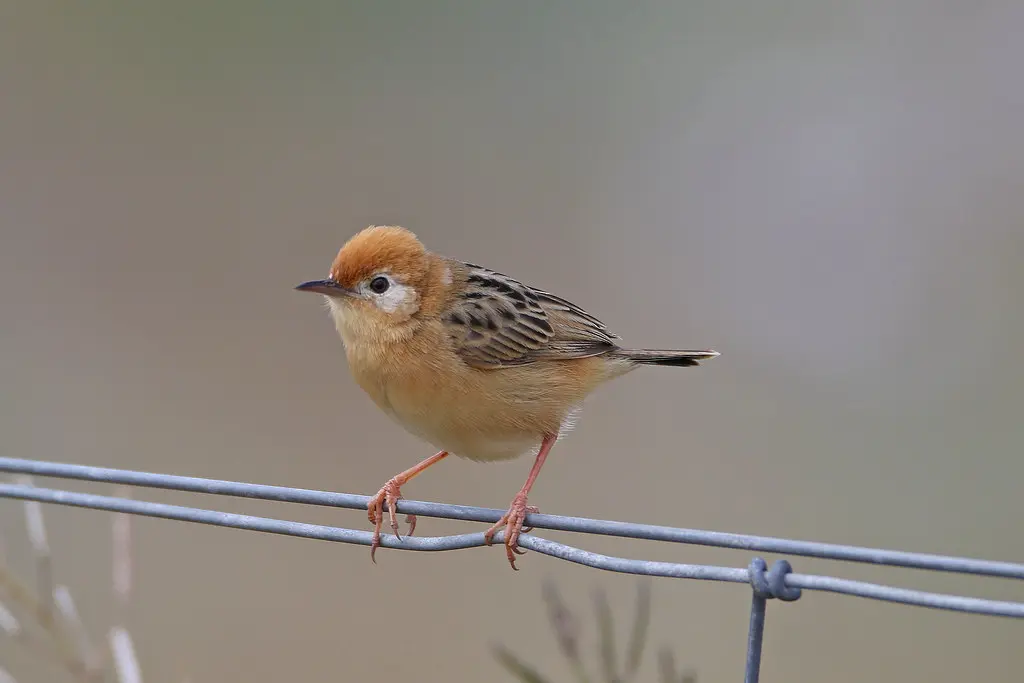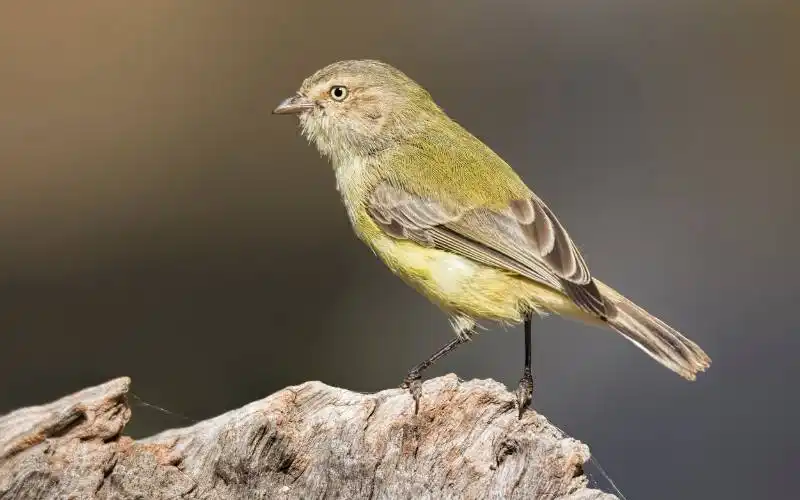If you’re looking for the Top 10 Smallest Birds in The World, then you are at the right place. In this article, we will discuss the Top 10 Smallest Birds in The World.
Birds are one of the most abundant creatures on the earth. There are many very small birds in the world. These small birds are difficult for ordinary people to see. Everyone knows that the ostrich is the largest bird in the world, but do you know which are the smallest birds in the world? Let’s take a look at the top 10 smallest birds in the world with us, let’s take a closer look.
Top 10 Smallest Birds in The World
10. Crimson Chat

Body Size: The body length of the Crimson Chat is usually 4-5 inches, about 10-12 cm, and the weight is 10-12 grams.
Appearance characteristics: The chest and head of the crimson are bright red, the back is dark gray, the throat is white, and the female bird does not have any red except the rump. This bird is very beautiful.
Habits and Behavior: Crimson chat feed primarily on insects, and they hop and fly on tree branches.
Habitat and distribution: The crimson chat is distributed in Australia and New Zealand, including Australia, New Zealand, Tasmania, and nearby islands.
Conservation Status: The conservation status of the Scarlet Australian is not currently threatened, but their habitat and environment need to be protected.
9. Brown Gerygone

Body size: The length of the brown Gerygone is between 9 and 11 cm, and the weight is between 5-6 grams.
Appearance: The brown gerygone is a small bird with a brownish tinge, a dark patch on the head, and black fine lines on the tail.
Habits and Behavior: The brown gerygone feeds primarily on insects, and it hops and flies on tree branches.
Habitat and distribution: The brown gerygone is mainly distributed in Australia and New Zealand, including Australia, New Zealand, Tasmania, and nearby islands.
Conservation status: The brown gerygone is listed as one of the low-risk (LC) species in the IUCN Red List of Birds, and it is also one of the world’s protected animals.
8. The Golden-Headed Cisticola

Body size: The length of the golden-headed Cisticola is between 9 and 11 cm, and the weight is between 5-6 grams.
Appearance characteristics: The golden-headed Cisticola has a golden head and a fan-like tail. It is a beautiful bird.
Habits and Behavior: The golden-headed Cisticola feeds primarily on insects and spiders, and it hops and flies on branches.
Habitat and distribution: The golden-headed Cisticola is mainly distributed in Australia and New Zealand, including Australia, New Zealand, Tasmania, and nearby islands.
Conservation Status: The golden-headed Cisticola is listed as a Least Concern (LC) species on the IUCN Red List of Birds.
7. American Goldfinch

Size: The American goldfinch is the smallest of the North American chrysalis, reaching a length of 3.5 to 4.7 inches (8.89 to 11.93 centimeters) and weighing only about 0.28 to 0.41 ounces (7.9 to 11.6 grams).
Appearance characteristics: The American goldfinch is a kind of goldfinch, and its appearance characteristics also include a dull back and golden yellow wings.
Habits and Behavior: The American goldfinch feeds primarily on seeds and insects, and it hops and flies on branches.
Habitat and Distribution: The dark-backed goldfinch is found mainly in North America.
Conservation Status: The conservation status of the American goldfinch is not currently threatened.
6. The Goldcrest

Size: The Goldcrest is the smallest of all European birds, measuring 3.3 to 3.7 inches (8.38 to 9.4 centimeters) long and weighing only 0.16 to 0.25 ounces (453 to 7.08 grams).
Appearance characteristics: Goldcrest has a light body, is widely distributed, and has a beautiful singing voice. Its appearance is endearing.
Habits and Behaviors: Goldcrest’s main food is small spiders and insects, regardless of Coleoptera, Hymenoptera, Diptera, or Lepidoptera, it will peck. One chrysanthemum warbler can eliminate 8 million to 10 million pests a year.
Habitat and distribution: Goldcrest is widely found in Europe and is the national bird of Luxembourg.
Conservation Status: The conservation status of Goldcrest is not currently threatened.
5. Bananaquit

Body size: 7-12 cm. A species of passerine bird, the Bananaquit is one of the smallest, cutest, and most beautiful birds in the world.
Appearance characteristics: The body is light black and yellow, with white spots on the wings, and the mouth is pointed and curved.
Habits and Behavior: Mainly feed on nectar, sometimes insects and fruits. Materials such as banana leaf fiber are commonly used to build nests.
Habitat and distribution: Found in the West Indies (except Cuba) and southern Mexico to Argentina.
Conservation Status: The Bananaquit is listed as Least Concern, but threats such as habitat destruction and climate change remain.
4. The Pardalote

Body size: 7.87-9.9 cm. The Pardalote bird is endemic to Australia and one of the smallest birds on the Australian mainland.
Appearance characteristics: The body is dark blue and black, with white spots on the wings, the head and throat are dark blue or black, and the mouth is elongated.
Habits and Behavior: It mainly eats fruits and insects, and also sucks nectar. It is often active in trees or bushes and builds nests with materials such as plant fibers.
Habitat and distribution: Found in Australia, mainly in forests and shrublands.
Conservation status: The Pardalote Bird is listed as Near Threatened. Its population is rare and threatened by factors such as habitat destruction, human activities, and climate change.
3. Weebill

Body size: 7.62-8.89 cm. The Weebill is one of the small birds in Australia and New Zealand.
Appearance: The body is dark brown, with white spots on the wings, and the beak is elongated.
Habits and Behavior: Mainly feed on nectar, but also occasionally eats fruits and insects. It is often active in trees or bushes and builds nests with materials such as plant fibers.
Habitat and Distribution: Found in Australia and New Zealand, including some nearby islands.
Conservation status: The Weebill is listed as a Least Concern species, but habitat destruction and human activities still pose threats to it.
2. Vervain Hummingbird

Body size: 7.62-8.89 cm. The Vervain hummingbird is one of the small hummingbirds, with an average weight of 0.1 ounces (about 2.83 grams).
Appearance characteristics: The body is dark green, the head and throat have purple or blue luster, and the feather color of the female bird is relatively dark.
Habits and Behavior: Mainly feed on nectar, but also prey on small insects. It can hover in the air, its wings vibrate rapidly, and its tongue can be extended to suck nectar.
Habitat and distribution: Native to southwestern North America, living in dry shrub belts and desert edges.
Conservation status: The Vervain hummingbird is listed as a Least Concern species, but factors such as habitat destruction and climate change still pose threats to it.
1. Bee Hummingbird

Body size: 5.6-6.5 cm. The Bee hummingbird is the smallest bird in the world, with an average weight of only 2 grams, which is lighter than a coin.
Appearance characteristics: The beak is slender like a needle, and the tongue is like a slender thread. The male is a lustrous blue-green upperparts, a bright red throat with iridescent transverse plumage on the throat and neck, and a white belly.
Habits and Behavior: It mainly feeds on nectar, and also eats small insects. It can hover in flight, its wings vibrate rapidly, and its tongue can be extended to suck nectar.
Habitat and distribution: Found in Central and South America, mainly in forests and grasslands.
Conservation Status: The Bee hummingbird is not listed as endangered, but is threatened by factors such as habitat destruction and climate change.




